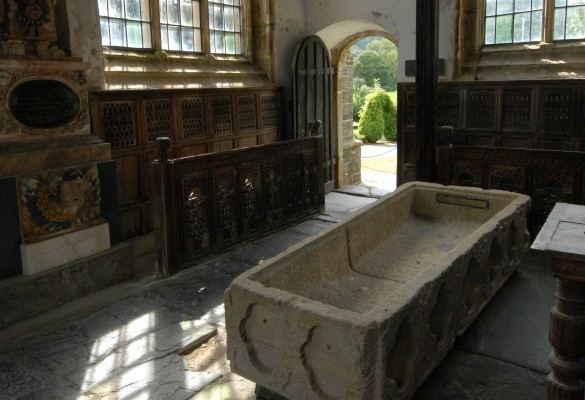Country Wales Functional status Active Designated as world heritage site 19 February 1993 | ||
 | ||
Similar North Llanrwst railway st, Gwydir Castle, Llyn Geirionydd, Galeri Betws Y Coed, Tŷ Mawr Wybrnant | ||
St Grwst's Church, Llanrwst, is located in Church Street (Tan yr Eglwys), Llanrwst, Conwy, Wales. It is an active Church in Wales parish church in the deanery of Llanrwst and Rhos, the archdeaconry of St Asaph, and the diocese of St Asaph. Its benefice is united with those of Llanddoged with Capel Garmon, Llansanffraid Glan Conwy, and Eglwysbach. The church is designated by Cadw as a Grade I listed building.
Contents
History
The church was built in the late 15th century, possibly in the 1470s. The Gwydir Chapel was added in 1633–34 by Richard Wynn of Gwydir. The west tower was added in the early 19th century, replacing a bellcote. In 1884 the Lancaster architects Paley and Austin restored the church and added a north aisle. They also removed the west gallery, and reseated the church, increasing its capacity to 362. The cost of their work amounted to £2,300 (equivalent to £220,000 in 2015).
Exterior
St Grwst's is constructed in rubble stone with limestone dressings. Its architectural style is Perpendicular. The plan consists of a nave and chancel in a single range, a north aisle, a south porch, the Gwydir Chapel at the southeast corner, and a west tower. The tower is in three stages, with diagonal buttresses, and a castellated parapet. The Gwydir Chapel also has a castellated parapet. Both the chapel and the nave have four-light east windows.
Interior
Inside the church is a north arcade of three bays, carried on octagonal piers. The rood screen is still present, and has retained its loft. It is considered to be one of the finest in Wales. It has twelve bays, with a central doorway. Its tracery is elaborately carved with a vine-trail rail, and depictions of such subjects as the Instruments of the Passion, and pigs eating acorns. The font has a "bowl of weird organic forms". Also in the church are painted Royal arms dating from before 1801. The Gwydir Chapel contains 17th-century fittings and fixtures, including stalls, a lectern and a communion table. There are also numerous monuments and a 13th-century stone coffin; the latter is said to be that of Llywelyn the Great. The monuments which date from about 1440 to the 17th century, include those of Sir John Wynn, who died in 1627, and other members of the Wynn family.
The Llanrwst Bell has been described as an old funeral bell and, according to Geraldus Cambrensis was in use about 450 AD. The bells, from Ireland, were originally used as cattle bells but later adapted for ecclesiastical purposes.
